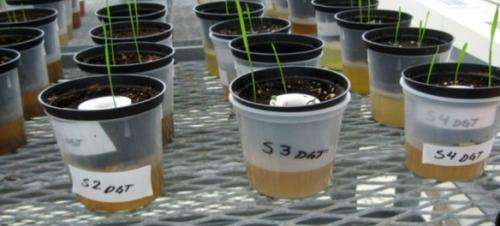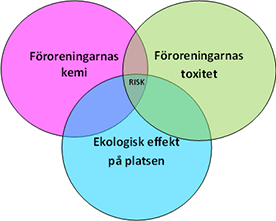New approach for risk screening of contaminated land

Following a century of industrialisation, contaminated sites lie abandoned or underutilized all over the world. Now there is a rapid new approach for risk screening of each site, according to studies from the University of Gothenburg.
Contaminated land is soil, groundwater or sediment that contains levels of contaminants so high that they exceed natural levels in the environment. Decisions about remediating contaminated land are often based on risk estimates derived from generic guideline values. Guideline values are used at the screening stage of the risk assessment and have been developed to represent "safe" levels of these contaminants applicable over large geographical areas (usually countries).
These guideline values indicate what may be considered acceptable across the majority of sites. Guideline values more appropriate to specific sites can usually also be calculated. Levels of toxins in the soil exceeding the guideline values may entail risks to humans and the environment.
Today's risk screening system has shortcomings
The simplified system, using general and even site-specific guideline values, may not always capture the true risk of contaminants at the site. Using guideline values can lead to overly conservative remedial decisions, resulting in costly clean-ups that may not be necessary.

The guideline values do not take into account the toxicity of the contaminant mixture or the bioavailability of the toxins, i.e. the extent to which they are taken up by plants or animals at the site. Bioavailability depends on a number of factors such as soil properties.
"One of the most important factors governing the bioavailability of many metals is the soil's pH. In acidic soils, these metals are generally more available to animals and plants. It is estimated that acidic soils cover 30% of the planet's ice-free land area," says Emily Chapman at the Department of Biological and Environmental Sciences.
Triad approach captures site risks better
Emily Chapman's research studies in Gothenburg and Wolfville (Canada) have shown that site-specific risk screening can be improved using a triad approach with tests in undisturbed soil samples from the contaminated site.
"We have developed a simple, rapid triad approach for ecological risk-screening of metal-contaminated acidic soils. It takes into account the contaminants' site-specific chemical properties, mixtures and toxicities. The effects of contaminants can also be distinguished by examining the activity of organisms in soil from the site," says Emily Chapman.
This approach can improve early risk estimates of metal-contaminated acidic soil and tell us more about the contaminants' true site-specific risks. More information also makes it easier to choose the right remediation technology and to determine when it is necessary to excavate the soil.
"The risk-screening approach developed in our research project could also be used for monitoring in-situ (on-site) remediation of acidic metal-contaminated soil" says Emily Chapman.
More information:
Thesis title: Ecological risk screening of metal (Pb and Zn) contaminated acidic soil using a triad approach.
Link to thesis: hdl.handle.net/22077/32687
Provided by University of Gothenburg


















